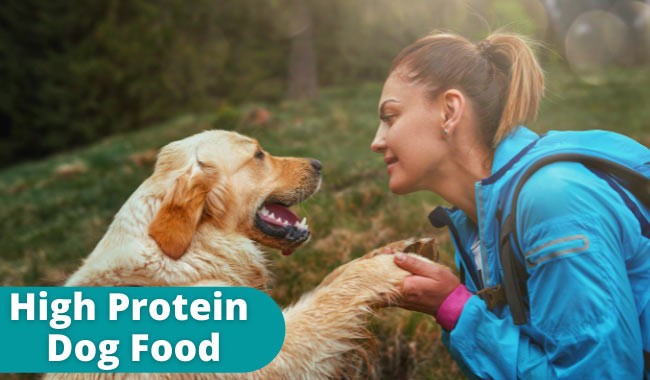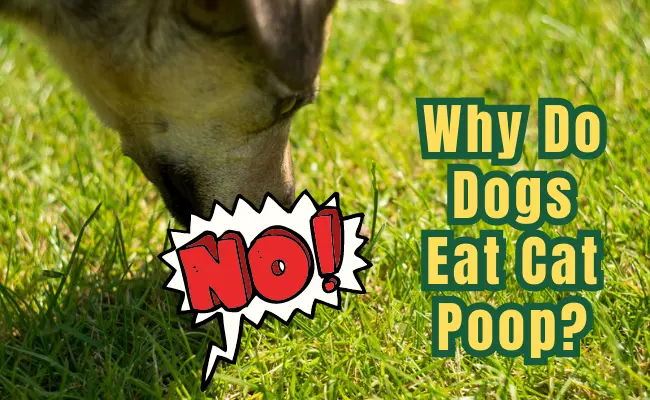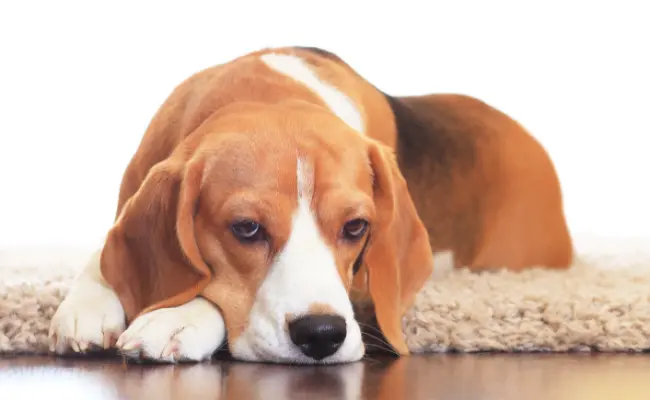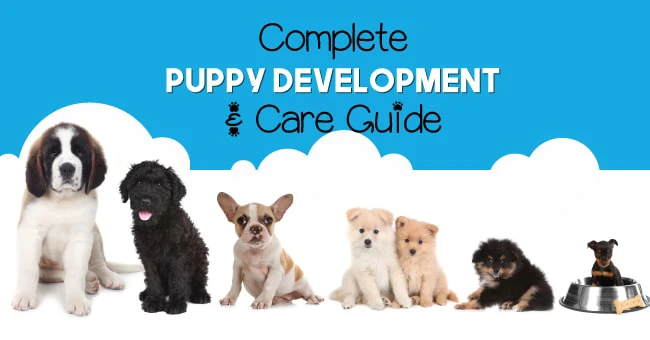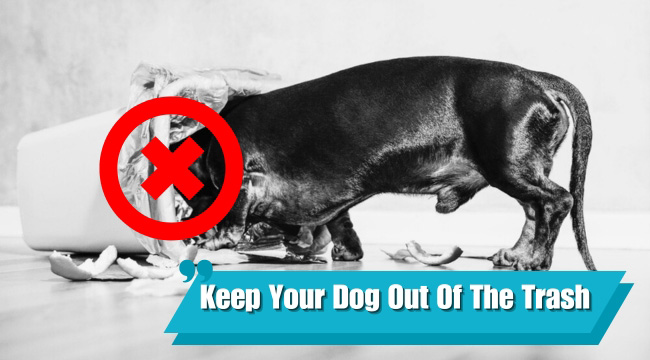
Waghound.com is an Amazon Associate, and we earn from qualifying purchases.
If you’re a dog owner, you’ve probably experienced the frustration of coming home to find your furry friend rummaging through the trash can. Not only is it unpleasant to clean up the mess, but it can also be dangerous for your pet if they ingest something harmful. However, keeping your dog out of the trash is easier said than done. Dogs are curious creatures, and the scent of discarded food can be irresistible. In this article, we’ll share 11 proven strategies on how to keep your dog out of the trash, so you can have a cleaner and safer home for both you and your four-legged companion.
Why is Trash Bad for Dogs?
Dogs are naturally curious and have a keen sense of smell, which can lead them to explore and investigate things they come across, including trash cans. However, consuming trash can have serious health consequences for your furry friend. Rotting foods and spoiled leftovers can contain harmful bacteria, viruses, and parasites that can cause infections in dogs, such as salmonella and E. coli. These infections can cause symptoms like vomiting, diarrhea, and dehydration, and in severe cases, they can even be fatal.
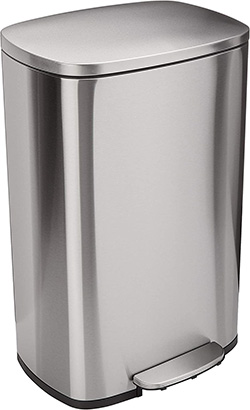
Moreover, trash cans can contain objects that pose a choking hazard or are dangerous to dogs if ingested. For example, bones, plastic bags, and sharp objects like broken glass or metal can cause blockages or lacerations in a dog’s digestive system, which may require surgery to remove. Additionally, some common household items, such as cleaning products and medications, can be toxic to dogs if ingested. Ingesting these items can lead to symptoms such as tremors, seizures, and even organ damage.
It’s crucial to keep your dog out of the trash to prevent them from encountering these hazards and to ensure their health and safety.
Common Hazardous Garbage for Dogs
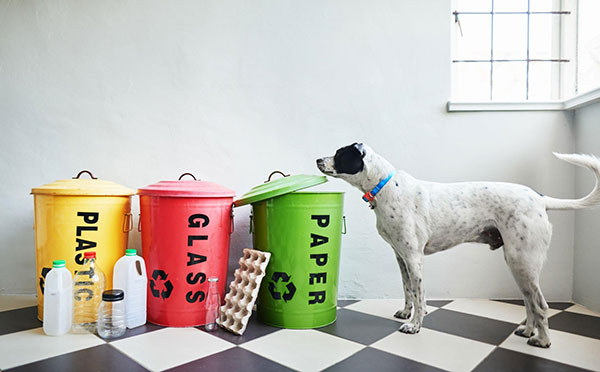
Here are a few things you may have in your trash can that can be dangerous for dogs:
1. Spoiled or rotten food
Foods that are past their expiration date or have gone bad can contain harmful bacteria, viruses, and parasites that can cause infections and illnesses in dogs. Some common symptoms of foodborne illnesses in dogs include vomiting, diarrhea, lethargy, and dehydration. If your dog has eaten spoiled food and is exhibiting these symptoms, it’s important to take them to the veterinarian for treatment.
2. Bones
Dogs love to chew on bones, but some bones can be hazardous to their health. Bones that are small, sharp, or brittle can break off into small pieces and cause choking or blockages in a dog’s digestive system. If a bone becomes lodged in your dog’s throat or intestine, it may require surgery to remove.
3. Plastic bags
Plastic bags can pose a suffocation risk to dogs, and if ingested, they can cause choking or blockages in the digestive system. To prevent your dog from accidentally ingesting plastic bags, be sure to dispose of them properly and keep them out of your dog’s reach.
4. Sharp objects like broken glass or metal
Sharp objects like broken glass or metal can cause cuts or blockages in a dog’s digestive system. If your dog has ingested a sharp object, it’s important to seek veterinary care immediately to prevent internal injuries.
5. Cleaning products
Cleaning products such as bleach, ammonia, and other chemicals can be toxic to dogs if ingested. Symptoms of chemical poisoning in dogs may include vomiting, diarrhea, tremors, and seizures. Be sure to keep all cleaning products out of your dog’s reach and to clean up any spills or leaks promptly.
Related Post: Fall in Love with Silver Labs: A Stunning Variation of the Labrador Retriever
6. Medications
Many human medications can be toxic to dogs if ingested. Common medications that are toxic to dogs include pain relievers like acetaminophen and ibuprofen, antidepressants, and diabetes medications. Symptoms of medication poisoning in dogs may include vomiting, diarrhea, tremors, seizures, and even organ damage. If your dog has ingested any medications, it’s important to seek veterinary care immediately.
7. Batteries
Batteries contain toxic chemicals like acid and can be hazardous to dogs if ingested. Symptoms of battery poisoning in dogs may include vomiting, diarrhea, abdominal pain, and lethargy. If you suspect that your dog has ingested a battery, seek veterinary care immediately.
8. Cigarette butts
Cigarette butts contain nicotine and other toxic chemicals that can be hazardous to dogs if ingested. Symptoms of nicotine poisoning in dogs may include vomiting, diarrhea, tremors, seizures, and even death. To prevent your dog from ingesting cigarette butts, be sure to dispose of them properly and keep them out of your dog’s reach.
9. Chemicals like antifreeze or pesticides
Chemicals like antifreeze or pesticides can be toxic to dogs if ingested. Symptoms of chemical poisoning in dogs may include vomiting, diarrhea, tremors, seizures, and even organ damage. Be sure to keep all chemicals out of your dog’s reach and to dispose of them properly.
Why Do Dogs Eat Trash?
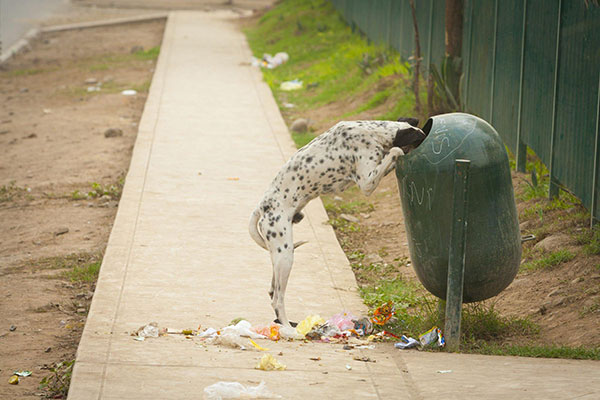
Dogs don’t just eat trash out of habit or just to annoy you. They don’t understand that it is bad for them in the first place. You need to know why trash cans are so appealing to your canine buddy to actually stop them from wreaking havoc in your bin.
1. Scavenging is Biological for Dogs
Dogs are natural scavengers that snoop around for food by instinct. This is how dogs used to survive in the wild so their keenness to explore bins isn’t all that surprising. You can’t really expect dogs to go against their nature. So if your dog is hungry, it’s very normal for it to look in the bin for a meal.
However, with training, you can teach your dog not go near trash cans. Also if you provide a sufficient amount of food, then you can be sure that they won’t resort to looking for food elsewhere.
Related Post: What to Do When Your Dog is Coughing Up Blood
2. Smells and Textures of Trash
Dogs like to explore with their senses. They’re attracted to the smells of food and sometimes even blood. What’s more, they also enjoy chewing textured things like cardboard. All of these are things are easily available in the trash, so you can guess why they’re so appealing to dogs.
3. Behavioral Problems
Dogs tend to attack trash cans when they are bored. The bin is like a treasure box for your dog, waiting to be uncovered. Pulling out trash from a bin and throwing it about is sort of game for them.
When your dog has a lot of pent-up energy, with nowhere to channel it, they will do all sorts of naughty things like biting shoes and making a mess. Sometimes dogs also do this because they’re feeling anxious and looking through the trash makes them feel better.
4. Underlying Medical Conditions
Certain medical conditions like polyphagia or malabsorption syndrome can also make dogs hungrier than usual. During these times they may resort to eating garbage.
Polyphagia is when a dog has an abnormal appetite and is eating a lot more than usual. This is one of the stages of canine diabetes. Malabsorption syndrome is when your dog’s intestines can’t absorb all the nutrients it gets from meals, making your dog feel hungry all the time.
How To Keep Your Dog Out Of The Trash
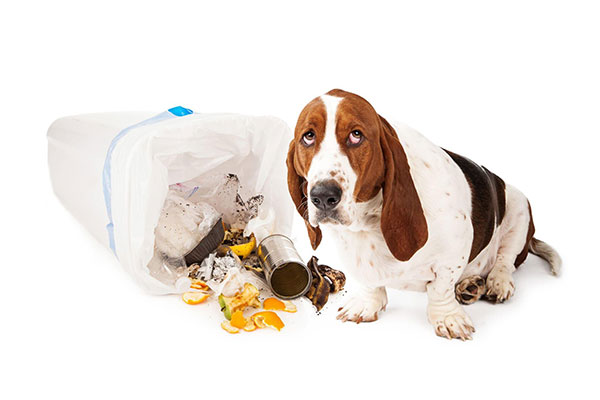
There are a number of things you can do to reduce the appeal of trash can hunting. This may not seem important, but your dog’s behavior is greatly dependent on their lifestyle. Go through the list of tried and tested methods and try them out yourself.
1. Feed your Dog Well
If dogs have a full stomach and satisfactory meals, they will be less likely to go digging through the trash can for scraps. You should feed your dog small meals throughout the day. Make sure the food you’re feeding your dog is balanced and nutritious.
Kibble or wet food is the best commercial food option. Check the ingredients to make sure that there are decent nutrients in the food you are buying. Good quality dog food should have meat, vegetables, and grains listed as the main ingredients.
Avoid fillers like corn, wheat, and animal by-products.
You shouldn’t give your dog table scraps or frequent treats. Break up treats throughout the day and opt for healthier snack options like carrots. These treats are unhealthy and contribute to obesity; they don’t give your dog any nutrition or satisfy their hunger.
2. A Busy Dog is a Good Dog
Make sure your dog has enough chew toys to keep them busy. They shouldn’t have the time to look in the bin if they are occupied. Dogs act out when they have a lot of pent-up energy. This is where the need for consistent exercise comes in.
If your dog has been messing up the trash lately, it might mean that they aren’t getting enough exercise. Consider taking your dog out on more regular walks and visits to the park. Even just extending the playtime hours will work.
Then your dog will have a place to channel their energy and they won’t be eyeing the bin. What’s more, exercise will improve your dog’s health and strengthen your bond.
3. Hide the Bin
If the trash eating habit is getting really bad, the immediate solution is to hide the bin. Buy a bin that’s inconspicuous and easily movable. Keep it inside cupboards or places your dog can’t see, like under the sink.
If your dog can’t see the bin, it won’t be on their mind and there will be fewer disasters.
4. Restrict Bin Access
Some dogs can, unfortunately, master the art of opening cupboards and although that’s a wonderful talent, it’s a nightmare for the owner. If you’ve got a skilled dog like this, it’s time to put up some barriers. The best thing to do would be to install baby gates around the bins.
You could also just keep your bin in a separate room. Make sure your dog doesn’t have access to that room. You could also consider placing your bins a bit higher up than usual, in a place your dog can’t reach.
Another way to restrict your dog’s access to the bin is to buy a bin that’s complicated to open. Tight lids and systems that dogs can’t figure out are ideal.
Step bins are probably the easiest for a dog, so don’t opt for that. Go for some dog proof trash cans recently launched in the market instead.
5. Make your Bin Unappealing
You can actually keep your dog away from the bin by startling them when they go near it. There are motion sensor carpets that link to a device. These devices make a loud noise or even blow a cold gush of air on your dog.
Some carpets placed in front of the bin may even give a slight shock to your dog, acting as a corrective mechanism. These are in no way harmful for your dog, but they might not be the best option if your dog is anxious.
6. Booby Traps
Instead of buying devices, you could also set up a homemade trash obstacle on your own. The trick is to stack a bunch of empty cans in the shape of a pyramid near the bin. A string should be tied to one of the cans at the bottom, while the other end of the string should be tied to a treat.
This treat needs to be hanging above the trash can. So whenever your dog goes towards the trash can and tries to grab the treat, the tower of cans will fall.
The loud noise should create negative feelings for your dog towards the bin. However, you should be careful about your dog eating the string.
7. Training Your Dog
The most important thing you should do is train your dog to stay away from the garbage. With dogs, immediate correction and praising is the key to training. So if you don’t catch your dog on the spot with the trash, correction won’t really help.
Be super observant and make sure to scold your dog whenever you catch them in the act. The loud booby traps for the bins mentioned above are a good way of sounding an alarm.
As for training, there are a number of methods to follow:
8. Clap and Off
When your dog approaches the trash can and nudges around, clap your hands loudly. Then with an authoritative tone say ‘off’.
9. Move your Dog
Whenever you see your dog near the bin, let them know that it is off limits. You can do this by pushing your dog gently away and taking up space in front of the bin instead.
10. Distract them with a Treat
If your dog goes snooping around the bin, approach them with a treat in your hand. Keep your fist closed and let your dog sniff your hand. Your dog might whine and bark to get the treat, but don’t open your fist. When your dog goes back to the bin, immediately open your fist and say ‘yes’.
At this point, when your dog walks away from the bin towards you, give them the treat. Gradually add in the command ‘leave it’ when you see your dog go near the bin.
11. Reinforce the Training
After a good amount of training, occasionally place your dog’s favorite and most smelly food on top of the lid. See if your dog still goes towards the bin. This might be hard for your dog to resist, so don’t worry if it doesn’t work.
But if your dog does go towards the food, train it again with the methods mentioned above. Soon your dog will know that no matter how appealing the smell is, the bin is off limits.
Final Thoughts
If it’s baffling to you as to why dogs love the trash so much, well now you have the answer. You also know how dangerous consumption of trash is for your dog.
Keeping your dog away from trash is also necessary to ensure both your dog and your family’s health. But don’t panic because now you know what to do. Try to follow the instructions in this article and train your dog appropriately.
Soon your efforts will pay off and your dog will know that trash cans are a ‘no-go’ zone.
